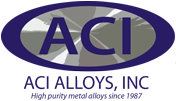PVD Materials And Medical Devices
Application of physical vacuum deposition (PVD) technology has increased substantially over the past two decades. It has recently achieved the level of the second most popular process of coating various components. Initially, this combination of environmentally friendly and precise material coating became the favorite of various sectors of the manufacturing sector. Tool manufacturers and the electronics industry became two industries that sought out PVD materials for coating their components.
Recently, another industrial concern has begun to use PVD coatings for their products. While the medical industry originally flirted with PVD process in the 1980s, the limitations of the materials and technology at the time, was not conducive to growth in its application in this field. Today, however, the PVD process is becoming widely accepted as a means of providing various medical instruments and devices with the qualities they need.
What Medical Devices Use PVD Technology?
PVD is often used to provide a thin film coating on a variety of medical devices and instruments. Among those that use this process:
- Catheters
- Dental Instruments
- Digital Thermometers
- 38 Endoscopes Heart Valves
- Laboratory Equipment
- Orthodontic Appliances
- Orthopedic Implants
- Pacemakers
- Prostheses
- Surgical Instruments
- Tubing
They rely on PVD materials to supply the qualities the instruments require when functioning in their specific environment.
Why Employ PVD?
Companies select PVD technology over others for several reasons. They turn to it mainly because it has the capability to alter the surface of the substrate metal comprising the component. It modifies it, enabling it to perform its medical functions. The PVD coating will vary to address the existing qualities of the substrate as well as to enhance or attribute desirable properties. Among the reasons for medical instruments to receive a layer of PVD material are the following:
- Increased Adhesion
- Bonding
- Lubricity
- Infection Prevention
- Increased Hardness
- Protection from Corrosion
- EMI/RFI (Electromagnetic and Radio frequency shielding)
- Wear Resistance
These are very desirable properties. A coating company must ensure when applying the material it is biocompatible. In many instances, the PVD coating most commonly employed to achieve this is titanium nitride (TiN). Other options currently used in the medical instrument sector are:
- Aluminum Titanium Nitride (AlTiN)
- Chromium Nitride(CrN)
- Titanium Aluminum Nitride(TiAlN)
- Zirconium Nitride (ZrN)
Such PVD material is capable of addressing specific needs and providing coatings for substrates comprised of ceramics, metals and polymers.
PVD Materials
At ACI Alloys, we can help you find the right process to thin film coat your component for the medical field. Our professional engineers and technicians are experts in this area. We understand the value of PVD technology and are always ready to help your company explore a new use for PVD materials in bettering the production of medical instrument components and devices.
